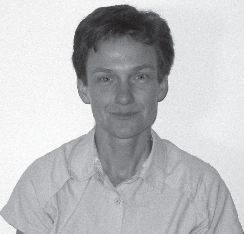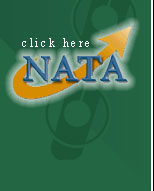|
PRACTICAL
SIGNIFICANCE
Low back
pain (LBP)
is
increasingly
recognized
as a
problem
affecting
many
children
and
adolescents,
particularly
those
who are
physically
active
and
participate
in
sports.
Although
the
problem
is being
acknowledged,
very
little
is known
about
its
clinical
presentation
or
treatment.
More
information
is
needed
to
inform
Athletic
Trainers
and
other
health
care
providers
on the
optimal
management
of
children
and
adolescents
with LBP.
STUDY
BACKGROUND
The
prevalence
of LBP
among
individual
aged
12-17
has been
estimated
in
studies
to be as
high as
20-25%.
Although
many
adolescents
recover
quickly
from an
episode
of LBP,
it
appears
that
some
will go
on to
develop
chronic
or
recurrent
problems
that
persist
into
adulthood.
A
tremendous
amount
of
literature
exists
regarding
the
management
of
adults
with LBP,
however
very
little
is known
about
children
and
adolescents
with the
condition.
The
reliability
of many
measures
used in
adults
has not
been
assessed
in
adolescents,
and
almost
no
information
exists
on the
outcomes
of
treatment
provided
by
athletic
trainers
or other
health
care
professionals.
The
purpose
of this
study
was to
systematically
examine
the
clinical
presentation,
rehabilitation
decision-making
and
clinical
outcomes
of
children
and
adolescents
with LBP.
OBJECTIVE
Describe
the
clinical
characteristics
of
children
and
adolescents
with low
back
pain and
compare
these
characteristics
to
adults
with low
back
pain and
examine
the
clinical
outcomes
of
rehabilitation
for
children
and
adolescents
with low
back
pain.
We also
sought
to
examine
the
validity
of the
Oswestry
disability
questionnaire
for
children
and
adolescents
with low
back
pain by
comparing
the
outcomes
obtained
with
this
measure
to those
from
adults
with low
back
pain.
DESIGN
AND
SETTING
Data for
this
study
were
collected
at
outpatient
physical
therapy
clinics
of
Intermountain
Healthcare
in Salt
Lake
City,
Utah
region.
These
clinics
have an
ongoing
clinical
outcomes
database
that
tracks
all
patients
treated
within
these
facilities.
SUBJECTS
Individuals
aged
12-17
with a
chief
complaint
of low
back
pain
attending
an
outpatient
physical
therapy
clinic
of
Intermountain
Healthcare
were
included.
MEASUREMENTS
A
physical
examination
was
conducted
at
baseline.
The
Oswestry
Low Back
Pain
Disability
Questionnaire
and
Numeric
Pain
Rating
were
collected
at
baseline
and the
conclusion
of
treatment
to
document
clinical
outcomes.
We also
examined
the data
stored
within
the
clinical
outcomes
database
on
individuals
aged
12-17
with low
back
pain,
comparing
the
outcomes
to those
obtained
from
adults
with low
back
pain.
RESULTS
Over a
2-year
data
collection
period,
children
and
adolescents
made up
4.1% of
total
number
of
patients
treated
for low
back
pain.
At
baseline,
adolescents
had a
mean
Oswestry
score of
31.0
(sd=13.1),
which
was
lower
than the
mean
score
for
adults
(mean =
40.6, sd=16.0)
(P<0.001).
The mean
pain
rating
at
baseline
for the
adolescents
was 5.1
(sd =
2.2)
which
was
similar
to adult
values
(mean =
5.6, sd=2.4).
Approximately
60% of
the
adolescents
were
participating
in
organized
sports.
Adolescents
were
more
likely
to be
classified
in the
stabilization
category
and less
likely
to be
classified
in the
specific
exercise
category
compared
to
adults
(P<0.05).
The
likelihood
of
manipulation
classification
was
similar
to
adults.
Mean
change
scores
for the
Oswestry
were
similar
for
adolescents
(mean
=12.5,
sd =
13.2)
and
adults
(mean
=13.3,
sd
=16.0);
however,
when
expressed
as a
percent
change
adjusted
for
baseline
scores
adolescents
experienced
greater
change
than
adults
(42.3%
vs.
31.3%,
P=0.04).
The mean
change
in pain
was also
similar
for
adolescents
(mean
=1.9, sd
=2.2)
and
adults
(mean
=2.0, sd
=2.4).
CONCLUSIONS
Children
and
adolescents
with low
back
pain are
different
than
adults
with the
condition.
Differences
were
noted in
the
clinical
presentation
and the
outcomes
obtained
with
treatment.
The
outcome
measures
used in
this
study
appeared
to be
useful
for
determining
outcomes
in this
age
group.
Although
clinical
improvements
were
documented
for the
children
and
adolescents
with low
back
pain in
this
study,
further
research
is
needed
to
identify
the most
effective
management
strategies
for
these
individuals.
Funded
by NFL
Charities
|
Publication
and
Presentation
List:
-
Fritz,
JM,
Clifford
SN.
Clinical
Characteristics,
Outcomes,
and
Prognostic
Factors
for
Adolescents
with
Low
Back
Pain
Undergoing
Rehabilitation.
2008.
National
Athletic
Trainersí
Association
Annual
Meeting
&
Clinical
Symposium
St.
Louis,
MO.
|
|
|
|

Julie M. Fritz, PhD, ATC, PT
Principal Investigator |
Julie M. Fritz, PhD, ATC, PT is currently an Associate Professor in the Division of Physical Therapy at the University of Utah, and Clinical Outcomes Research Scientist with Intermountain Health Care in Salt Lake City, Utah. She received her Bachelorís Degree from Hope College in Holland Michigan in Biology while also completing an Internship program in Athletic Training. She received her Master of Science in Physical Therapy from the University of Indianapolis, and her PhD in Rehabilitation Science at the University of Pittsburgh. She previously served on the faculty in the Physical Therapy Department at the University of Pittsburgh prior to moving to Salt Lake City. Her research interests have focused on examining the outcomes of treatments for individuals with low back pain and matching the most effective treatments to various sub-groups of patients with low back pain.
Julie M. Fritz, PhD, ATC, PT
University of Utah
520 Wakara Way
Salt Lake City, UT 84108-1213
(801) 581-6297
Fax: (801) 585-5629
julie.fritz@hsc.utah.edu |
|
|
This
Grant
Information
Summary
may be
downloaded
in a
2-page
pdf file
from
www.natafoundation.org/pdfs/08FritzGrantSummary.pdf. |
Back to
July 29, 2009
eBlast
Newsletter
Send e-mail
to teresa@nata.org with questions
or
comments
about this web site. |


